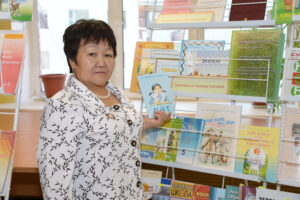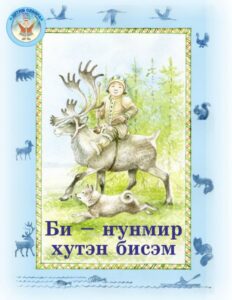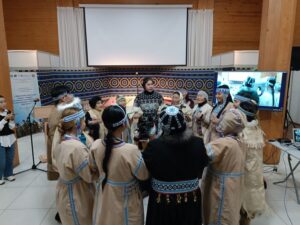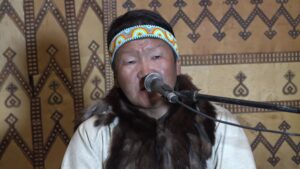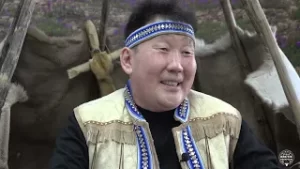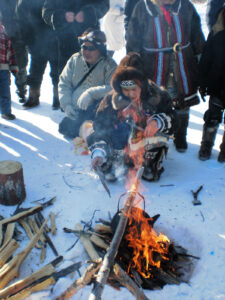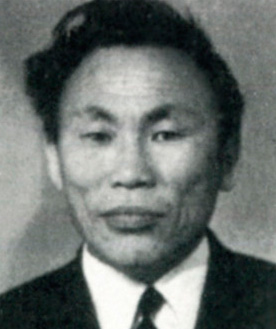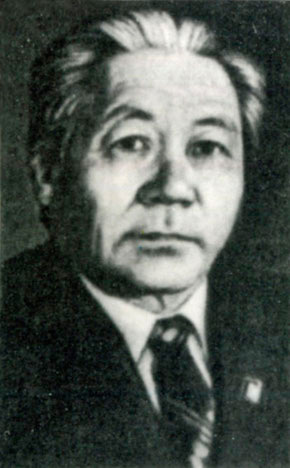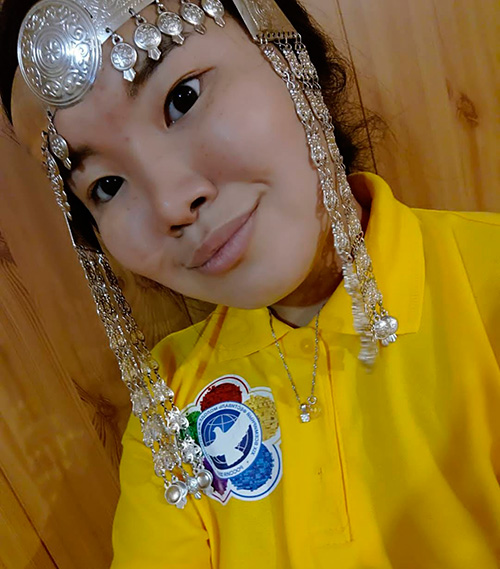Evens
Evens are one of the indigenous small-numbered peoples of the North. Currently, small groups are settled in five administrative-territorial entities of the Russian Federation, in particular on the territory of the Far Eastern Federal District: Kamchatka Krai, Koryakia (now part of the Kamchatka Territory), Magadan Region, Khabarovsk Krai, Chukotka Autonomous Area (part of the Arctic Zone of the Russian Federation) and in the Republic of Sakha (Yakutia) (13 districts are part of the AZ of the Russian Federation, which is more than half the area of the republic) (see Table 1; 2).
In the republic, the major part of the Evens are concentrated in the Arctic regions in rural settlements, occupying in turn a peripheral position on the territory of the region. Each of these districts represents a zone of intersection of economic and cultural borders of indigenous peoples - Sakha, Dolgans, Evens, Evenks, Yukagirs, Chukchi.
Table 1
Areas of residence and the number of Evens by regions of the Russian Federation
| № | Region | Areas of residence | By the data of The RPC 2010 (man) |
| 1. | Kamchatka territory | Bystrinsky District | 1872 |
| 2. | Magadan territory | Olsky, Severo-Evensky, Srednekansky, Susumansky, Tenkinsky and the city of Magadan | 2429 |
| 3. | Khabarovsk territory | Okhotsky district | 1128 |
| 4. | Chukotka autonomous are | Anadyrsky, Bilibinsky districts and the city of Anadyr | 1392 |
| 5. | Republic of Sakha (Yakutia) | Abyysky, Allaikhovsky, Bulunsky, Verkhnekolymsky, Verkhoyansky, Kobyaysky, Momsky, Nizhnekolymsky, Oymyakonsky, Srednekolymsky, Tomponsky, Ust-Yansky, Eveno-Bytantaysky districts | 15071 |
Source: the results of Russian Population Census
Table 2
Dynamics of the number of Evens in the Russian Federation and the Republic of Sakha (Yakutia) according to the population censuses
| 1979 | 1989 | 2002 | 2010 | |
| Evens in the Russian Federation in general | 12529 | 17199 | 19071 | 21830 |
| Evens in the Republic of Sakha | 5763 | 8668 | 11657 | 15071 |
Source: the results of Russian Population Census
In recent decades, there has been a steady increase in the Even population. Thus, the Republic of Sakha (Yakutia) is one of the dynamically developing subjects of the Far Eastern Federal District. According to the data of the 2002/2010 censuses, statistical materials and sociological research, in general, there is a positive dynamics of demographic processes in the environment of the ISNPN of the RS (Ya), including Evens. As can be seen from Table 2, compared with 1989, the number of indigenous small-numbered peoples of the North in the republic increased by 60.9%, and the number of Evens by 72.4%.
Historically, in the geolandscape, the area of residence of the Evens belongs to the mountain-taiga, mountain-tundra and forest-tundra zones, represented by numerous watershed chains of the system of mountain nodes and spurs, plateaus, mountain forests. In this natural-geographical niche, most of the local groups of modern Yakutia Evens conduct their life activities (see Table 3). In general, mountains and plateaus occupy 2/3 (more than 70%) of the region's territory (in the west – the plateau-plain, in the east – the dismembered mountainous region and high highlands, in the south – the Aldan Highlands and the Stanovy Ridge). Only in the north and in the center of the republic there are vast plains and lowlands, which in total make up only 1/3 of the territory.
Table 3
Natural and economic zones of settlement of Evens
in Republic Sakha (Yakutia)
| N | Areas of residence | Natural and economic zone | |
| 2 | Evens | Abysky (Arctic region) | mountain-taiga |
| Allaikhovsky (Arctic region) | seaside-tundra | ||
| Bulunsky (Arctic region) | mountain-tundra | ||
| Verkhnekolymsky(Arctic region) | горно-тундровая, лесотундровая | ||
| Kobyaysky | mountain-taiga | ||
| Momsky(Arctic region) | mountain-taiga | ||
| Nizhnelokymsky (Arctic region) | seaside-tundra | ||
| Oymyakonsky | mountain-taiga | ||
| Srednekolymsky (Arctic region) | mountain-taiga | ||
| Tomponsky | mountain-taiga | ||
| Ust' Yansky (Arctic region) | seaside-tundra mountain-tundra | ||
| Even-Bytantaysky (Arctic region) | mountain-taiga |
̽ (Compiled by [Konnikov, 1971; Moiseev, 1999])
The traditional way of life of the Evens is based on engaging in economic activities directly related to biological resources and environmental sustainability, on a deep relationship (physical and spiritual) with the northern natural landscape.
Most groups of Evens are historically characterized by the culture of nomadic reindeer herders-hunters of the taiga and forest tundra. This principle of life activity consists in a model of cyclical alternation of natural rhythms and seasonal changes in the life support system. The natural and geographical living conditions correspond to the traditional life of the Even community, primarily for hunting and reindeer husbandry, as well as for coastal lake and river fishing. This "accommodating/feeding landscape" ensures their full-fledged vital activity. It was in this ecosystem that the formation of the northern/arctic hunting and reindeer herding geocultural complex of Evens.
Modern linguistic and ethno-cultural situation. Due to the ongoing processes of integration and unification, the state of the languages of the ISNPN, including the Even language in the subjects of the Russian Federation is undergoing various changes. The issues of preservation and development of native languages remain very relevant in places of compact residence of Northerners. Currently, there is an intensive reduction in the number of native speakers, a drop in the knowledge of the native language, especially among the younger generation. All ethno-linguistic processes that take place in the linguistic environment cause the development of bilingualism, multilingualism or the dominance of one language (see Table 5). In this situation, the language of the indigenous ethnic group most often remains in the position of non-dominant.
According to the All-Russian Census of 2010, the proportion of people who indicated their native language corresponding to their nationality remains low (see Table 4). There are significant discrepancies between the number of the Evens and the number of those who speak their native language.
Table 4
The number of Evens of the RS (Ya) who indicated the native language corresponding to the nationality according to the data of the RPC-2010
ISNPN | total number in the Russian Federation (people) | including RS (Ya) (people) | in % of the total number | считают родным язык (people) | in % of the total number |
Evens | 21830 | 15071 | 69 | 3089 | 20,5 |
Table 5
The number of the Evens of the RS (Ya) who consider as native other languages
ISNPN | The number in Yakutia | Those who consider the Yakut language as their native language | Those who consider the Russian language as their native language | ||
People | % | People | % | ||
Evens | 15071 | 9848 | 65,3 | 2003 | 13,3 |
According to the results of the All - Russian Population Census of the Russian Federation in 2010
The native language is used as a language of communication and in writing in the village of Berezovka of Srednekolymsky, the village of Sebyan-Kyuel of the Kobyai districts of the RS (Ya). In these areas, the Even language demonstrates almost complete preservation.
In general, the study of the Even language is carried out in 16 schools of the republic, as well as in a number of preschool educational institutions. Children learn their native language most often as an academic subject or as an elective.
Although many of the Evens do not speak their native language, they nevertheless retain an idea of their ethnic identity. The current ethno-cultural situation in the northern and Arctic regions of Yakutia shows a certain stability of national identity and, accordingly, the ethnic identity of the ISNPN, including the Evens. This was most clearly manifested back in the 90s of the XX century, when, in the wake of the rise of national consciousness, aboriginal ethnic communities had a tendency to revive their native language, "lost culture", and increased interest in ethnic roots. The same can be traced at the present stage: at present, there are more and more people among the Evens who are aware of their identity and cultural distinctiveness. Thus, in the course of many years of painstaking work on the revival and development of ethnic culture, national holidays and ceremonies are restored and held annually ("Evinek", "Meeting the sun", "Tundra Bloom", Reindeer Herders' Day etc.), folk customs and rituals, various cultural practices have been recreated.
Of course, the contents of the festive ceremonies have been restored in a transformed form. In order to preserve and develop the language, folk art, traditional applied arts, folklore, ethnocultural centers, folklore collectives, dance ensembles function in the places of residence of the Evens, Decades of the native language, various contests on language and ethnic culture are held annually. A nomadic festival of Even ring dance is held at the republican level "haedjae", where participants come from different regions of Yakutia.
Currently, the islands of the centuries-old traditional economic way of life, the original culture of the northern communities are reindeer herding production collectives that conduct their economic activities on the traditional life-supporting territory, hundreds of kilometers away from the nearest settlements.
It is with traditional life support systems that the preservation of the native language and components of the ethnic culture of the ISNPN is connected – transport, outbuildings, industrial clothing, tools, traditional food, customs and rituals, folklore. Thus, reindeer husbandry today is part of the living cultural tradition of the Evens. In reindeer herds, in connection with the nomadic way of life, material and spiritual culture are practiced daily, which are reproduced by reindeer herders and their families.
All the vital activity of the Arctic peoples takes place in close interaction with the surrounding ecosystem. In the worldview of the Evens, Man and Nature form a single whole. For them, the Northern nature is one of the most important elements of the national image of the world, it is a kind of "mental map" containing a whole range of deep meanings and symbolic codes, where a person, like every living earthly being, is "a grain of the world", "a needle of the Earth", "a guest on the Earth"..
The Evens have always had a wise attitude towards the taiga as a habitat and humane ecological thinking, the essence of which is awareness of the fragility of the northern nature and its vulnerability. One of the most important principles of ecological culture was the conscious rationing of the consumption of natural resources.
In the culture of life support, this principle was embodied through the concept of measure, i.e. extracting from Nature exactly such an amount of resources that would not undermine its reproducing foundations (for example: it is impossible to cut down trees unnecessarily; it is impossible to hunt beyond what you will take with you , etc.). It is on the ideas that Nature is alive, and that it affects human life, the traditional eco-culture of the Evens is based, aimed at preserving and maintaining a harmonious balance in the Universe.
Thus, at present, modern Evens continue to remain an organic whole of the Arctic landscape, preserving and passing on from generation to generation their experience of life in the harsh natural and climatic conditions of the North and the Arctic.
Candidate of Historical Sciences, E.K. Alekseeva
Literature and sources:
- Alekseeva E.K. Ethnocultural and linguistic situation among the indigenous inhabitants of the Bulunsky and Ust-Yansky districts // Indigenous peoples of the Russian Federation: problems, priorities and prospects of development in the transforming world: collection of scientific articles based on the results of the All-Russian Scientific and Practical conference with the International participation, dedicated to 100th anniversary of F.S. Donskoy, (September 24, 2019, Yakutsk). – Yakutsk:, 2019.
- Audiovisual Fund of Linguistic, Literary and Cultural Heritage of the Peoples of the Republic of Sakha (Yakutia) [Electronic resource] (access mode: http://igi.ysn.ru/?page_id=3704&even).
- Results of the All-Russian Population Census of 2010. [Electronic resource] (access mode: https://sakha.gks.ru/ folder/39644/).
- Konnikov, E.D. Topical issues of reindeer husbandry development of the Yakut ASSR / E.D.Konnikov. – Yakutsk: Book. Publishing house, 1971. – 116 p.
- Poiseev, I.I. Sustainable development of the North: ecological and economic aspect / I.I.Moiseev. – Novosibirsk: Nauka, 1999. – 280 p.
- Sirina A.A. Evenki and Evens in the modern world: self-awareness, nature management, worldview. N.N. Miklukho-Maklay Institute of Ethnology and Anthropology RAS. M.: East lit., 2012. - 604 p.
Articles
Famous and notable Even people
TV lessons on Even language
‘Yonchaedyae’ project (from the Yukaghir language it means ‘a bell’) took place thanks to the support of a grant from the head of the Rupublic of Sakha (Yakutia) among the media. A total of 200 releases have been prepared, with forty five-minute TV lessons in each language. The project is designed for people who do not speak or have poor command of their native language.
The author and leader of the project is Natalia Smetanina, the director is Nina Kornilova.
We would like to thank the Ministry of Innovation, Digital Development and Infocommunication Technologies of the Republic of Sakha (Yakutia), the Association of Indigenous Minorities of the North of the Republic of Sakha (Yakutia), National Broadcast Company ‘Sakha’, Joint Stock Company ‘Almazy Anabara’ for support and assistance in the implementation of the ‘Йоҥчэдиэ’ project...




